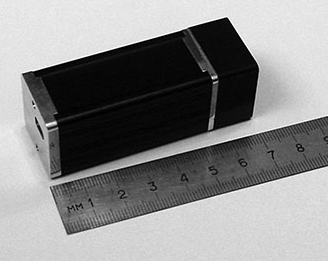4.3.3.2 CZT and CT detectors
Cadmium Zinc Telluride (CZT) or Cadmium Telluride (CT) crystals have non overlapped conductivity bands and therefore bring the advantage of improved intrinsic energy resolution as compared to conventional NaI crystals.

The CT and CZT-based detectors can operate in direct-conversion (or photoconductive) mode at room temperature, unlike some other materials (particularly germanium) which require liquid nitrogen cooling. Although their relative higher intrinsic efficiency due to the high atomic numbers of Cd and Te, the limited maximum size of the crystals does not allow attaining an efficiency comparable to that of the NaI detectors. The CZT / CT crystals can be manufactured into different shapes for dedicated applications, and with a variety of electrode connection designs, such as coplanar grids. The latter allows the functioning in unipolar (electron-only) mode, thus improving the intrinsic energy resolution.
Many manufacturers incorporate thermoelectrically cooled CZT or CT detectors into very compact, light-weight hand-held portable spectrometers. However, their low efficiency limits their use to applications with high activity/dose rate sites.